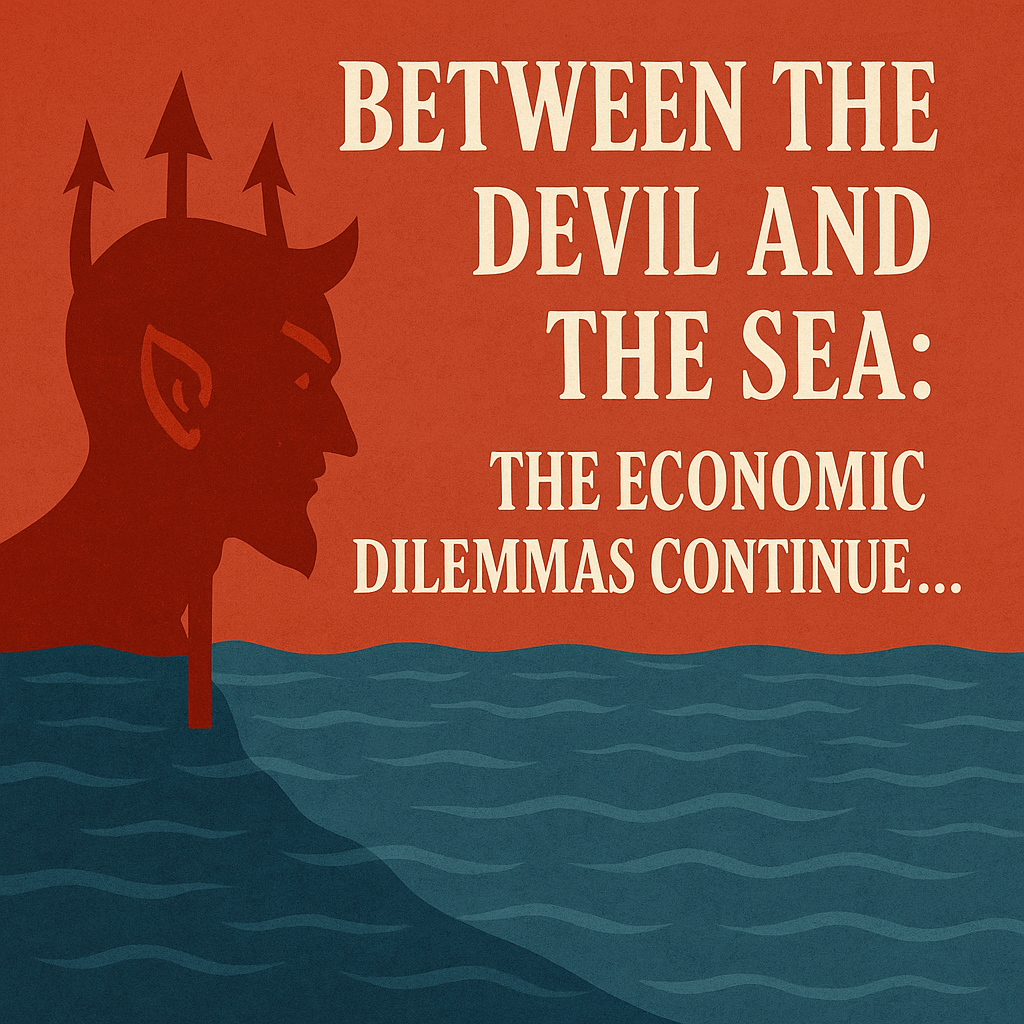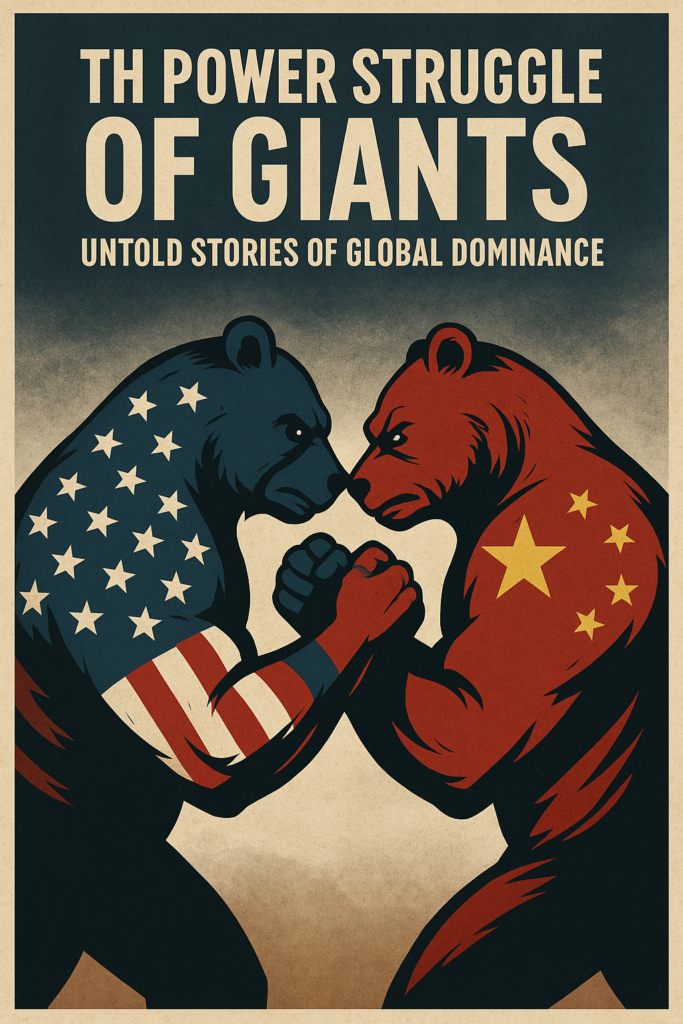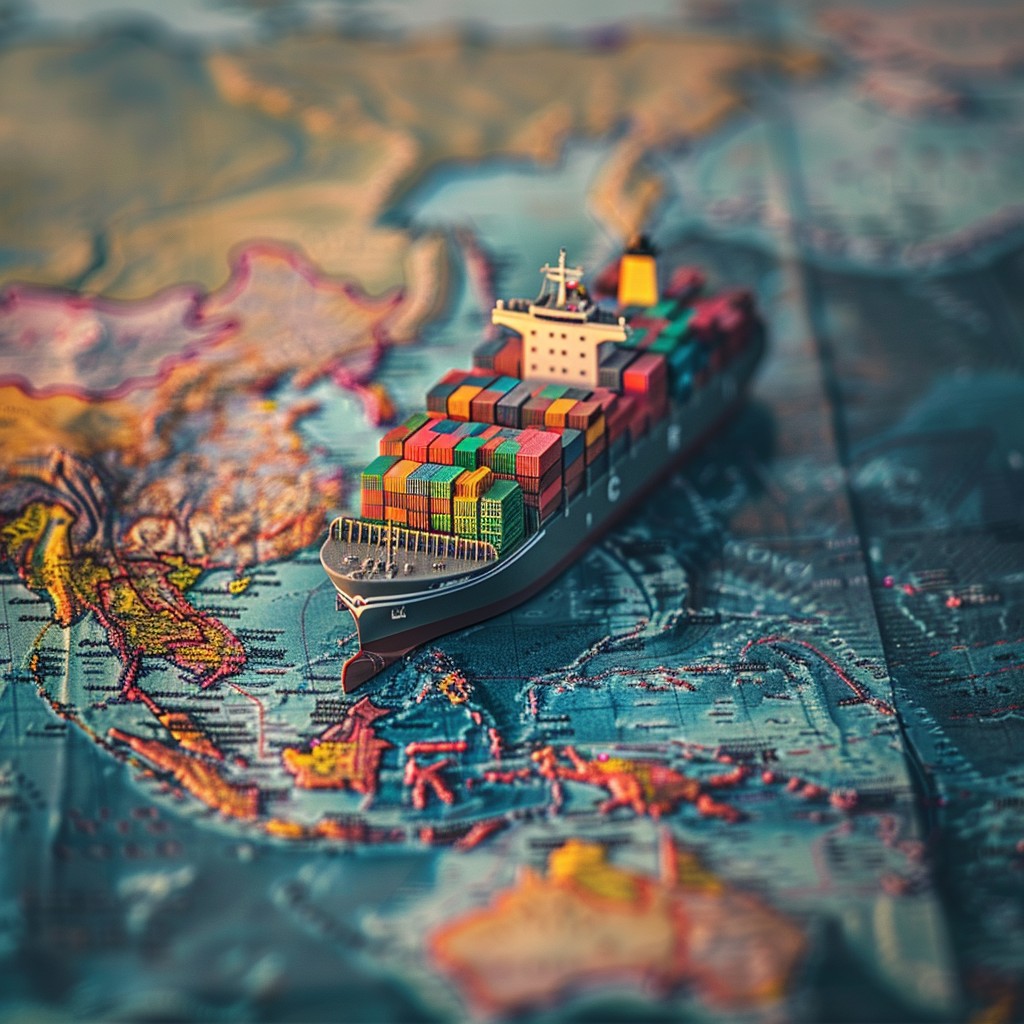
Between the Devil and the Sea: The Economic Dilemmas Continue…

26 April 2025
The broad sentiments in the world stock markets are generally negative for the week indicating the looming recessionary pressure squeezing the confidence of the market participants. From trade perspective, these movements are quite natural after the recovery moves revisit the lost grounds. How ever an eye of suspicion will prevail after Moody’s downgrade of US credit rating, which acted as bad omen to reveal fiscal and debt-oriented worries that is haunting the US economy. The rise in treasury yields might be an indication that investor prefer bonds with higher interest rate but such rise in interest rate can significantly impact the money flow in the economy. The inflationary pressure with nature of stagflation is an uninvited guest at this moment. The trump policies and economic conditions pose great challenge for US economy since the decision and economic conditions not moving in congruence. The warning from JP morgan CEO about the mounting risk from inflation and credit risk had to taken seriously while framing the fiscal policies.
Asian market showed resilience over the ongoing bearish sentiments but such nature might act as transient if more negativity tests the strength of the market. The weakness of international trade has not significantly affected the domestic market of Asian countries and it is understandable considering the massive size of Indian and Chinese economy. Within the Asian economy Japan reacted in tandem with US economy but showed less aggressiveness while participating . In India , the industrial and service sectors sustained its momentum and general weakness in the global economy had not visibly impacted market dynamics apart from fear-oriented moves in stock markets. The decline in corporate earning of nifty stocks might be an early warning but how Indian economy reacts with adversity is very crucial. From IMF GDP data , it is visible that only few countries are projected with above 6 percent growth rate . India, Libya, Niger, Zambia, Tanzania and Mongolia are few countries projected with 6 percent growth rate. Apart from India, none of countries fall within first twenty GDP ranking countries. Thus, from institutional investors perceptive, the favoured destination to park fund might be India after considering the democratic nature of country. Like gold, India is also burdened with expectations after observing the significantly high price earnings ratios in Indian markets. It is quite interesting to watch, how these dynamics will play while deciding to park the funds with growing economies. Value investing stocks are a rare species in India but there are abundant companies with higher growth prospects. The strong political will is another encouraging factor in India but shareholders wealth maximization is not an enchanting slogan in India because Indian investors are behind money and not highly interested in value. These bare realities always pose significant challenge while thinking about long term investment in India.
Now it is time to gain some insights about future prospects, it is understood fact the major investments in AI and robotics are happening all over the world. The expectation from these technologies is very high. Google announcement of investing $75 billion in AI expansion shows the seriousness of technology companies in embracing Artificial intelligence. At this junction, they don’t have much clue about deriving profitable revenue from these ventures. Sometimes the future is like that, the final destination is just a mirage, and your role is simply to reach the next visible point and wait for the next moment of clarity.
The Power Struggle of Giants: Untold Stories of Global Dominance
19 May 2025

The recovery strength of the world stock markets showed that market inevitably driven by fund flow mechanism and the easing of trade tension between US and China had really helped the investors’ to regain the confidence. The Strike of Moody credit rating downgrade had given a grey shade to that ongoing positivity at the end of week. The mounting of debt is a concern for US but realizing the mammoth size of its GDP compared with other countries reveal that there is ample scope for management. The rift between US and China is also a tussle between the nations to grab the role of global leadership. At present Chinese GDP is 63 percent of US GDP and it is really an agonizing factor to ignite phobias. For China, there is miles to go before grabbing that Coveted position. At present all these imaginations are from the point of view of economic performance of the country but we really ignore strong financial institution and giant companies of US which seize the prominent positions in Forbes list. US really shows us that staying ahead means staying aggressive in all aspects of competition. The trump role as a messiah of US economy has to interpreted from these ongoing economic developments.
If the lion king decides to retain all his hunt, then it is indirectly delivering the strong message that don’t grow at the stake of me. After the tariff war , two perspectives are evolving in US, the US economic perspective and US companies perspective because the major pie of global consumption is ignited by the supply chain efficiency of giant companies. It is interesting to watch , how these perspectives evolve over the period of time. According to me. Trump agenda of “Made in US” is not enchanting slogan for US companies and for them it is night mare of mammoth investments and digging value from highly priced labour. There is amble scope to speculate that the acute business man turned president may have bigger vision by finding synergy through artificial intelligence and robotics. In that scenario, it will result in paradigm shift that laydown new stories of productional efficiencies through evolving technologies. And if there are no such agendas attached then it is just like poking the back with burning wood. World had already witnessed the exceptional skill of US to manage inflation after quantitative easing and how far this skill will help in future if the trade dynamics are changed by tariff war. The appeal of dollar as an international currency might get affected if US lose its role as a centre of global consumption. It is important to realize that, for US it is very difficult to neutralize the threat of China because US is fighting with an enemy country which has the highest dollar reserves. Having said this does not mean that China is invincible. When giant fight with each other, both will get wounds irrespective of the fact about the magnanimity of might. And the weak will perish even though the war is between giants.
Global stock markets continued its recovery ballet with positive movements. The easing of trade tension between US and China really helped the market mood to gain most of the pie that is lost. The picking up industrial production and retail sales in China alleviated the fears of market participants. The marginal surge of inflation in US might not worry the market but it the time to take with cautious note if the shows a continuous rising tendency. Mixed sentiments noticed in commodities market, where crude oil and gold retained its negative correlation.
The Global Trade Voyage Amid Ceasefires and Trade Truces

12 May 2025
The world anxiously observed the geopolitical conflict between India and Pakistan, a war at this time will capsize the on going balance of global economy, which has been already shaken by global tariff wars. From global economic perspective the war between India and Pakistan have more impact because India has a major role in global supply chain along with United states, China and Germany. The flow of foreign institutional investors funds towards India amid tariff war shows their expectation in the growth of Indian economy. All these aspects will get severe blow if the conflict escalate towards a war. The war between Ukraine and Russia and war between Israel and Palestine have already influenced the global economy with rising inflation and food shortages. According to world bank[i], 12 million have been displaced due to Ukraine war and 13 million requires urgent humanitarian support. Just like India, Ukraine is not a major country for global supply chain, but it can inflict significant damage in terms of inflation. As per IMF reports[ii], Russia and Ukraine combined accounted for a quarter of global wheat exports and Russia is a major supplier of fossil fuels, especially to Europe. As per world bank reports[iii], Russia and Ukraine are large exporters of commodity inputs that are upstream in many global value chains, shortages of these commodities may severely affect a wide range of industries globally , including food, construction, petrochemical and transport.
The role of Donald trump to mediate the dispute between India and Pakistan for ceasefire conjointly read with these recent developments in global economy. From global perspective India is the best alternative to counter against China even though it is impossible for exactly replicate China in terms of supply of goods. Any way the announcement of ceasefire by two countries had brought lot of relief to the global community.
Global markets traded relatively stable for the last week, more positive movements are witnessed in Japanese and Chinese stock markets. The better financial performance from Japanese companies fueled the major trigger for optimism and 90 days pause on trade tariffs gives more relief to the Chinese markets. Most of the major currencies traded relatively stable but Turkish currency plummeted on substantial capital outflows followed by the arrest of Istanbul mayor Ekrem Imamoglu. Crude oil and precious metals traded with positive momentum whereas industrial metals copper and steel lacked significant volatility.
From global trade perspective, it is time to reshape the trade policies and address the critical factors influencing the economy with top priority. President Donald Trump decision to sign the executive order for implementing a “most favored nation” pricing model for medication is such an attempt to address the earlier studies which reveal that impact of tariff on pharmaceutical imports will result in 12.9% appreciation in cost. The new decision is aiming to reduce the US Drug prices by 30% to 80%[iv]. The free trade agreement between India and UK as well as US and UK trade deal negotiations are all attempts to find balance in the economy at the time of turbulence.
[i] Justin Damien Guénette, Philip Kenworthy, and Collette Wheeler, (April 2022) , Implications of the war in Ukraine for Global economy .” World Bank, Washington, D.Cextension://efaidnbmnnnibpcajpcglclefindmkaj/https://thedocs.worldbank.org/en/doc/5d903e848db1d1b83e0ec8f744e55570-0350012021/related/Implications-of-the-War-in-Ukraine-for-the-Global-Economy.pdf
[ii] https://www.imf.org/en/Publications/fandd/issues/2022/03/the-long-lasting-economic-shock-of-war
[iii] Justin Damien Guénette, Philip Kenworthy, and Collette Wheeler, (April 2022) , Implications of the war in Ukraine for Global economy .” World Bank, Washington, D.C.
[iv] https://www.news.com.au/world/north-america/us-politics/trump-new-executive-order-to-smash-aussies/news-story/dfa290158fe3d1d664faa018ec2de006?utm_source=chatgpt.com
Who owns the crystal ball: policymakers or market forces?

05Apr 2025
Before the advent of the 2004 tsunami, the ocean remained calm, and people played carefree on the beaches. This reminds us of the unpredictable nature of catastrophes, whether natural or manmade. We have witnessed this in the East Asian crisis (1997), the dotcom crash (2000), the global financial crisis (2008), and the COVID-19 pandemic. Meticulous observation can reveal early warning signals, but acting on them remains a challenge due to the heterogeneous nature of markets. The intensity of asset price erosion when fear becomes contagious is a matter of serious concern. The mounting debt of developed nations which reached above GDP is new phenomenon developed after Covid 19 contrary to the popular belief that developing and under-developed nations incur more debt. The decision of US President Donald Trump has to interpreted with these underlying macro-economic factors. Adding more fuel to fire, the consistent increase in trade deficit with major trading partners of US started disturbing its balance.
After the Industrial Revolution in 1760, the United States eventually emerged as the centre of global production and has remained the world’s leading economic power. Even the mere prospect of this trend shifting can unsettle and destabilize the nation. A momentary pause is necessary for the U.S., and the imposition of tariffs is not solely about addressing the trade deficit but it also provides the temporary reprieve they desperately need to rebuild and restructure in the most advantageous way possible.
The concept of production has evolved significantly, especially with the emergence of AI. We have moved from manual, human-led production to machine-assisted production, and now to AI-driven production, which often requires little to no human interaction. This evolution raises a pressing question: how long can we, as humans, sustain our role as valuable contributors to society?
An increasingly unproductive human population, combined with the continuous growth of the global population, poses a serious challenge. In this scenario, it may feel as though, much like in the Venom movie, we become mere hosts to artificial intelligence—adapting simply to survive in a world reshaped by it.
The policy makers who are negotiating beneficial terms for international trade have to perceive this bigger picture while framing policies of international trade. Human efforts dominated Asian markets and Mexican markets, who presently act as valuable resource to Global value chain may go to severe poverty, if the system ignores their importance in Global value chain.
From market point of view there no fresh story to disturb the recovery moves of world stock markets. The decision of the central bank of US and Japan to keep the interest rate steady had significantly influenced the recovery sentiments.. Gold prices continue to dwindle because only fear can build the safe haven appeal of gold. Crude oil price sharply declined due to the increase in production from OPEC countries.
Fear is lost with Time and time heals markets….
28 April 2025
It is a sigh of relief for the global market after all turbulence momentarily subdued due to easing of fear of tariff war there by reminding us that ‘time heal all wounds’. The relief in the global market might be a temporary phenomenon since we know that lot of dust are heaped under the carpet. Now it time to understand how these developments will impact in future. For countries, uncertainty is far worser than higher tariff, all long-term decisions will be impacted if the vision of future is impaired with uncertainty. All supply chain movements might get clogged, if there is not crystal-clear clarity in procurement. All countries are apprehensive about the impact of tariff on essential commodities and essential services. As per Reuters reports, trump administration announced probes to pharmaceutical imports after studies reveal about the impact of tariff on pharmaceutical products[i], as per this report US Drug cost will increase by 12.9% due to the hike in tariff. Thinking in similar line, China also exempted import tariff for some critical goods from US.
As per the data released from, national association of realtors, the existing home sales in US declined to 4.02 million registering the lowest figure in 2025. The general outlook of the global real estate sector remained broadly positive even though the apprehension of geo political risk and trade war might escalate the uncertainty in the sector. The data of core durable goods and durable goods from US showed contradictory nature, where the tapering down of core durable goods observed in contrast to this year best figure of 9.2% hike in durable goods. And the surge in durable goods is primarily attributed to transportation equipment’s.
The future development of international economic landscape is very interesting to watch because now self interest dominates over common good. It is said that, BRICS countries started exploratory discussions on creating multilateral investment guarantee mechanism which helps developing countries to lure foreign direct investment by offering political risks insurance and credit guarantees and thereby reducing the dependency of IMF[ii]. World Trade organisation has warned that trade war will significantly reduce the global merchandise trade and north America will face as significant 12.6% drop in exports[iii] .Stock market showed recovery movements for the week due to the easing trade tensions between US and China. American and European stocks showed strongest tendency for recovery and other markets also participated in the recovery showing less aggressiveness compared with European and American stocks.
[i] https://www.reuters.com/business/healthcare-pharmaceuticals/us-pharma-tariffs-would-raise-us-drug-costs-by-51-bln-annually-report-finds-2025-04-25/
[ii] https://www.scmp.com/news/china/diplomacy/article/3307998/brics-countries-eye-multilateral-mechanism-help-global-economy-brazilian-official.
[iii] https://www.weforum.org/stories/2025/04/global-trade-decline-2025-international-trade-stories-this-month/
Who Released the Market Genie of unpredictable nature…
21April 2025
The decision to impose tariffs on imports by US government reminds us the parable of Aladin and the magic lamp. The genie with unpredictable nature is released from the Lamp and it is difficult to judge the repercussions of this critical decision that might cause in the global economy. All countries impacted with decision might retaliate at any time like Newton third law of motion “for every action there is an equal and opposite reaction”. From an economic point of view, it is tough to predict the future and the element of uncertainty had deepened with such critical decisions. From now onwards all macro-economic developments must be observed with eye of suspicion. The increase of exports from China before the implementation of tariff might be an action from US companies to stock goods, especially raw materials to escape from fluctuation in price. The reduction of retail inflation in India might due to release of stock from warehouses that is especially meant for export consumption.
One thing that is very certain is that, this decision will test the intrinsic health of each and every economy. The economy that has enough room for self-adequacy will sustain in the turbulent times. As per the views expressed by Singapore RHB bank the growth of the economy will adversely be affected by global trade tensions and the growth may slip by 0.5-1%. According to WHO the global outlook remains sluggish and growth rate is slashed by 0.2 percent. Past remind us about opacity of closed economies and how cartels operate in such economies. It might not surprising if countries behave like cartels in future. The visit of Chinese president to Vietnam , Malaysia and Cambodia is not surprising and market behave with immense possibilities. It might not be surprising if its results in tug of war and bargain between raw material economies and finished goods economies. It is interesting to watch how China will counter and position itself in the troubled waters. The union with Arabs and other east Asian countries might be the first strategic move China might target to combat against the moves of US because it is not easy for US to stay cost effective without using east Asian markets. The decision to impose 125% import tariff on US imports shows the fearless face of China and the actions show that they are anticipating such moves from US.
Last week movement in the financial market showed initial cooling after the morbidity of crisis. Strong movement in gold markets shows that there is no other save haven option other than precious metal which had already burdened with market fear and phobias. Multinational companies and countries will seriously think about competitive positioning in the market. Definitely, it is the time for strategic thinking to stay survive and how to make adversity advantageous. It is time to closely observe all market participants and try to understand the evolving logic without forgetting the impact of invisible hands of economy.
Who Stepped back from Globalization
7 April 2025
The introduction of import tariff by President Donald Trump had brought the cloud of uncertainty over the market. The impact of the decision is heavily debated by economist and market experts. As per President Trump version this decision will super charge US economy contrary to belief of financial giants like JP morgan. According to JP morgan this decision will contract the US economy fuelling more unemployment and inflation. After prolonged years of globalization and liberalization, the major super power in the world is thinking in the path protectionist way is really a matter of concern. The act of US government reminds us about the cat favourite play with cotton yarn that turned towards a nightmare and desperately trying to come out of it. All countries around the world are disappointed with decision of US government and the retaliation of the major trading partners of US like Canada, Mexico, China , Japan and Germany is very crucial.
The economic indicator published last week does not offer any solace to the optimistic believers of future. All the economies continue to show the sluggishness and the participants are really suspecting whether recession is knocking the doors of world economy. Any way it is too early to take total pessimistic view about the economy. China Manufacturing index continues to show weakness and moderate value at 50.5 fails to show any expansion happening in the economy. Except the period of 2016 to 2018 and 2020-21 , the indicator continues to disappoint the market participants after 2011. After pathetic performance for October 2024 , the retail sales in Germany are slowly picking up above average performance.
